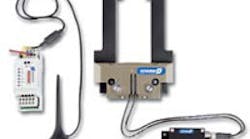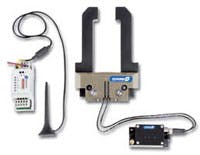RSS wireless pressure control system for 400-mm and larger pneumatic lathe chucks connects to a machine’s control unit to ensure trouble-free signal transmission and increase safety. Signals are transmitted to the machine’s control unit every 12-15 sec, for permanent control of the chuck’s clamping pressure. If pressure is lost, it transmits a signal to the control to stop the spindle. Double-version option controls pressure for chucks 200-mm in diameter and larger.
Schunk Inc., (800) 772-4865, www.schunk.com


